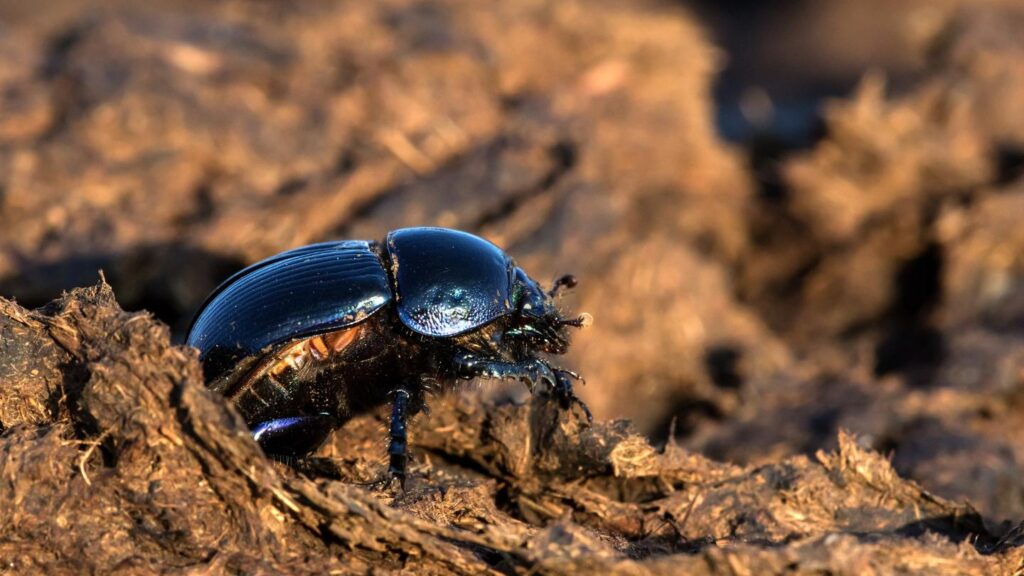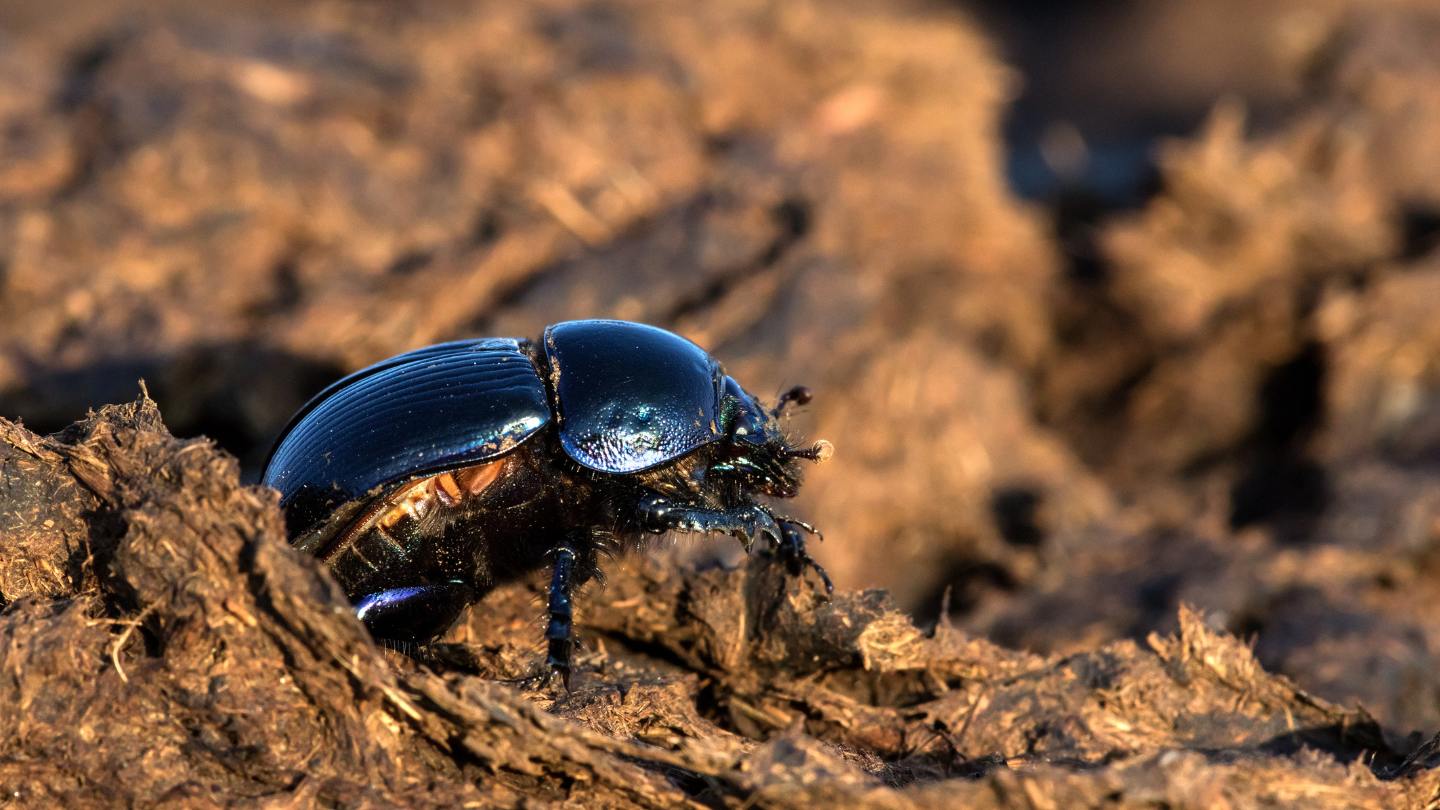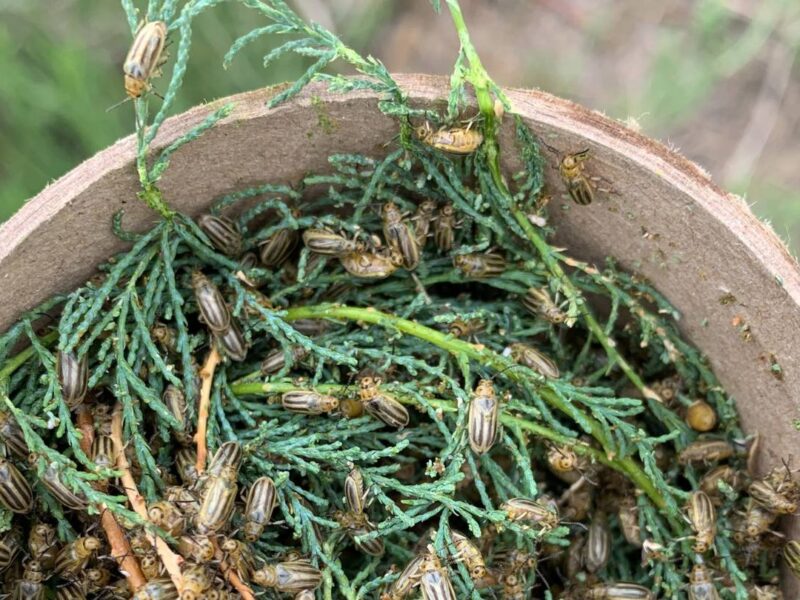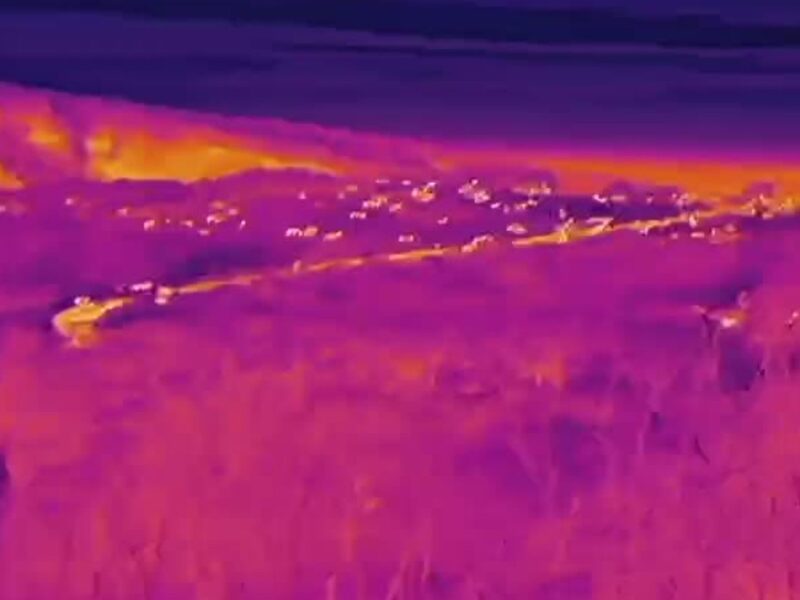Plop!
Big mammals poop. They poop a lot. Cattle poop up to a dozen times a day. Horses? Up to 15 times per day. Bison produce three gallons of poop per day. On healthy rangeland, all that poop seemingly just disappears. On unhealthy rangeland, it will linger for months, becoming a desiccated scab on bare ground. Ever wonder why that is? It’s because of a surprisingly charismatic creature that provides important ecosystem services that support soil health, water retention and general cleanliness in the tall grass.
The dung beetle.
“Dung beetles are the little things that run the planet,” said Mary Liz Jameson, a professor at Wichita State University with a doctorate in entomology and abiding interest in dung beetles. “They have a sh*t eating grin that’s adorable, they’re cute, and they have an incredible natural history that makes people want to learn about them.”
Mary Liz Jameson has learned a lot about the “dunger,” as she calls them. This family of specialized scarab beetles is one of the most important creatures on the grasslands because they get rid of enormous quantities of dung. That dung is used as a house, nursery and buffet for dung beetles and their offspring. By tunneling into the earth and towing dung underground, breaking it up by living in it, and most famously, rolling dung in little balls away to safer pastures, dung beetles return nutrients to the soil, help water infiltrate more effectively into the ground and get rid of waste that would otherwise accumulate and make it easier for pests to breed.
Jameson cited research that livestock producers in the United States spend nearly $20 billion treating pests like filth flies, worms, ticks, horse flies and more.
“If you give dung beetles the ability to do this on their own and to take the dung on the surface and bury it, you don’t have to waste money,” she said.
Dung beetles return nutrients to the soil, help water infiltrate more effectively into the ground and get rid of waste that would otherwise accumulate and make it easier for pests to breed.
Cork hats no longer needed
The most famous proof of concept for dung beetles’ usefulness was in Australia, according to another entomologist and dung beetle expert, Frank Krell. Krell is now working for the Smithsonian Institution in Washington, D.C., but previously was the “dung beetle guy” in Colorado in his position as the lead entomologist for the Denver Museum of Nature and Science.
“One of the reasons they brought dung beetles to Australia was because of the biting flies,” Krell said. Australia’s famed “cork hat,” a hat with dangling corks hanging all around its broad brim, was crafted in order to shoo flies away from the face. After the introduction of dung beetles, those hats became solely souvenirs for tourists as biting fly populations plummeted. Australia isn’t the only continent where dung beetles are imported: North American dung beetles are actually 95% European.
“There are 80 species of dung beetle in Colorado and the most common ones of them are not native,” Krell said. “You have in any dung beetle assemblage in the United States, 95% invasives from Europe and 5% natives.”
There are native dung beetle species, like the rainbow scarab dung beetle, and the fact there are no stories from Native peoples complaining about poop overload from 50 million bison means that there must have been a robust dung beetle population before the extirpation of bison and introduction of cattle. But we don’t know, Krell says, because no early settlers thought dung beetles were important enough to investigate.
“If they had they probably would have been shot for being suspicious,” Krell joked.
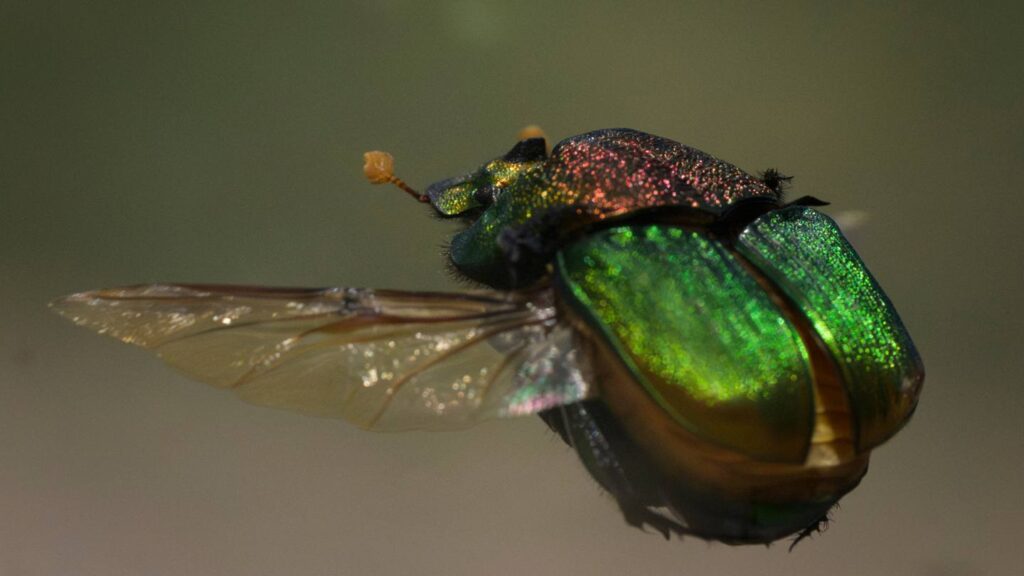
“Maintaining robust populations of dung beetles is good for farmers economically and for the long-term viability of their pastures.”
— Mary Liz Jameson, Dung Beetle Expert, Wichita State University
Profitability magnets
Things have certainly changed regarding the dung beetle’s reputation. Linda Poole, Western Landowner Alliance’s working lands program director, takes serious consideration of the dung beetle when she considers how to steward her land and livestock.
“My general rangeland philosophy is that I take my cues from nature. I take my cues from functional systems. The same way I choose my livestock is the same way I take care of my land, asking whether it’s fit for the climate and context I am in,” Poole said.
Dung beetles are profitability magnets, Poole says, because they reduce costs and reinforce a virtuous cycle.
“Thinking about profitability, you do want to think about dung beetles to add fertility to your land. You save money because you’re not deworming and it doesn’t decrease performance of your livestock plus you get better fertility and water infiltration,” she said.
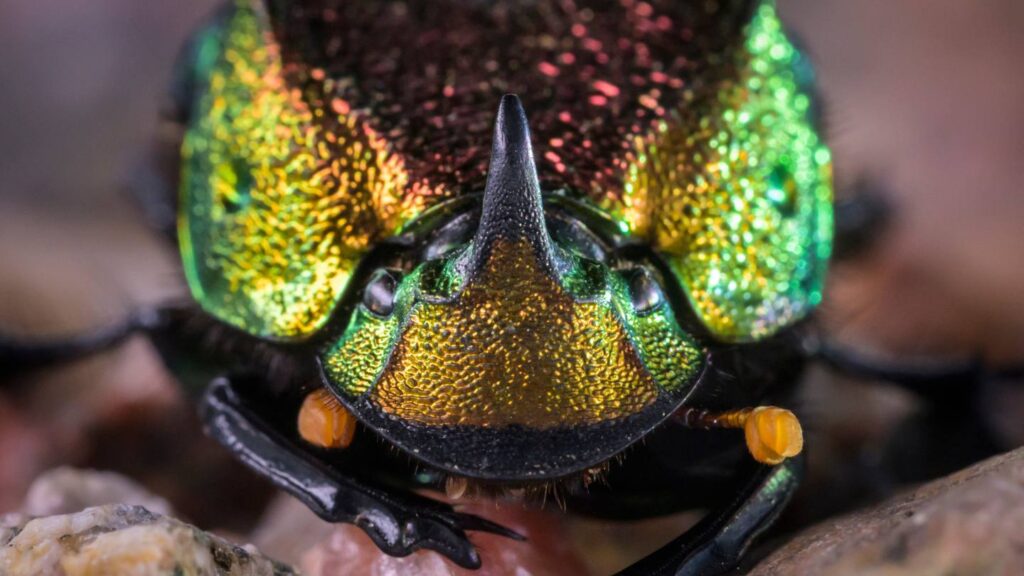
Timing your deworming can help dung beetles help you
Tim Luethke is the Great Plains restoration coordinator for the Denver Zoo Conservation Alliance. Luethke has been working with a bison herd at Daniels Park, south of Denver, and attempting to get a native dung beetle breeding program up and running. One of the potential problems with dung beetle reintroductions is the use of deworming medicines.
Dung beetles don’t do well when dewormers like ivermectin and other medicines are in dung, as it interferes with their reproductive cycle. One way producers can ally with beetles to keep their lands whole and healthy is by deworming before animals get out to pasture, so the dung with medicine in it is not being dropped onto rangeland where dung beetles live and breed. The timing of deworming doses can have huge impacts for the resiliency of rangeland, not just on one property, but on others around it.
“It’s habitat fragmentation for dung beetles,” Luethke said of the use of dewormers. “If you have, say, a cattle operation using ivermectin, and on one side you have a conservation bison herd and on the other side rainbow scarabs, the beetles are not likely going to make it through the field treated with ivermectin.”
Luethke does not suggest producers totally avoid using deworming medicines, but the ecosystem effects of dung beetles are so powerful timing those medications correctly can have major knock-on effects, as Mary Liz Jameson noted.
“Maintaining robust populations of dung beetles is good for farmers economically and for the long-term viability of their pastures,” Jameson said. “Benefit for the farmer is a benefit long-term for the grasslands.”
